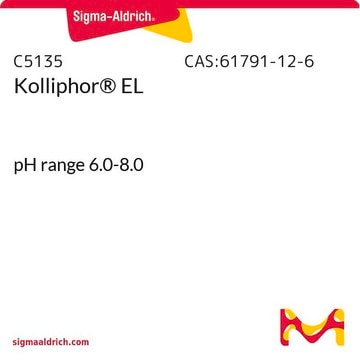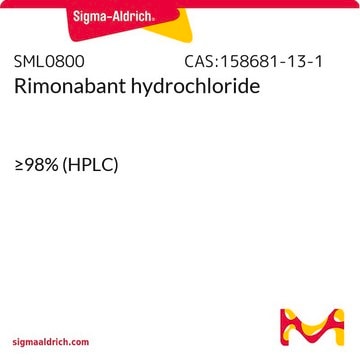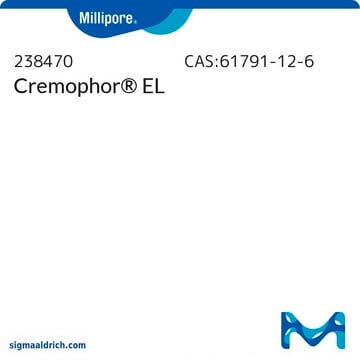A0580
Arachidonylethanolamide
≥97.0% (TLC), oil
Synonym(s):
Anandamide (20:4, n-6), AEA, Anandamide, Arachidonic acid N-(hydroxyethyl)amide
About This Item
Recommended Products
Quality Level
Assay
≥97.0% (TLC)
form
oil
drug control
regulated under CDSA - not available from Sigma-Aldrich Canada
color
colorless to light yellow
solubility
ethanol: soluble
density
0.92 g/mL at 25 °C (lit.)
lipid type
omega FAs
shipped in
dry ice
storage temp.
−20°C
SMILES string
O=C(CCC/C=C\C/C=C\C/C=C\C/C=C\CCCCC)NCCO
InChI
1S/C22H37NO2/c1-2-3-4-5-6-7-8-9-10-11-12-13-14-15-16-17-18-19-22(25)23-20-21-24/h6-7,9-10,12-13,15-16,24H,2-5,8,11,14,17-21H2,1H3,(H,23,25)/b7-6-,10-9-,13-12-,16-15-
InChI key
LGEQQWMQCRIYKG-DOFZRALJSA-N
Gene Information
rat ... Cnr1(25248)
Looking for similar products? Visit Product Comparison Guide
Application
- Interactions Between Endocannabinoid and Endogenous Opioid Systems Prospectively Influence Postoperative Opioid Use in Pregnant Patients Undergoing Cesarean Delivery: Investigates Arachidonylethanolamide′s interactions with opioid systems, providing insights that could lead to better management of postoperative pain and opioid use (Stone et al., 2024).
Biochem/physiol Actions
Caution
Storage Class Code
11 - Combustible Solids
WGK
WGK 3
Flash Point(F)
Not applicable
Flash Point(C)
Not applicable
Personal Protective Equipment
Certificates of Analysis (COA)
Search for Certificates of Analysis (COA) by entering the products Lot/Batch Number. Lot and Batch Numbers can be found on a product’s label following the words ‘Lot’ or ‘Batch’.
Already Own This Product?
Find documentation for the products that you have recently purchased in the Document Library.
Customers Also Viewed
Our team of scientists has experience in all areas of research including Life Science, Material Science, Chemical Synthesis, Chromatography, Analytical and many others.
Contact Technical Service













